Nick likes to tell the story of how we met, and I know exactly when to smile, nod, and roll my eyes. But here’s my version.
I was dressed head-to-toe in a faux pas. A boring oatmeal linen dress, to be specific, at a party with a Wear red! dress code, on an invite for an event honoring the dowager of fashion dictates, Diana Vreeland, at the Costume Institute.
My boss Lucia, who pulled her hair back from her temples so hard it hurt my scalp to look at her, tossed the thick white invite on my desk. Glossed black words debossed like teethmarks next to a red gardenia.
“Cree-stal, I know you’re a little Vreeland whore, and I cannot make it.”
At the time, I was a new, friendless fashion assistant, humping garment bags to shoots where stylists met me at the door, took the goods, and sent me packing.
As a kid, I’d haunted garage sales with my mom. Sold for pennies, the oversized pages of Vreeland-edited Harper’s Bazaars and Vogues flapped like tropical birdwings through my pebble-beach world. Looming, oversized faces with coral lips and blue-lined eyes gazed into my own, making me feel both small and seen.
As my parents schemed to keep the electricity on or speed-packed for midnight moves to skip out on rent, the magazines vowed that somewhere else, ease prevailed. Grape-sized jewels ringing swan-long necks and Vreeland’s “Why don’t you…” suggestions glowed like a string of dropped pearls I could follow to a more beautiful life.
Vreeland dared her readers to do or think of things her way. “Why don’t you…Find one dress that you like and have it copied many times?” This was possible. For years I’d been sending Grandma Pilar my measurements along with x-acto’d pages of women in designer outfits. Weeks later a box would arrive smelling faintly of cigarette smoke, guava paste, and tostónes: neatly stitched frocks wrapped in eggshell paper.
Of Coco Chanel: “Peasants and geniuses are the only people who count and she was both.” Not a prodigy, but I was a peasant.
“Why say you were born in a hovel? Who wants to hear that?” was not so easy to follow when my colleagues pinned me down with questions: Where did you grow up? Where did you go to college? What do your parents do? My answers spelled out H-O-V-E-L to the young women who grew up in Manhattan and summered in the Hamptons.
My dad was a policeman, Mom a housewife—until she left us.
Vreeland’s beacon lured me to my first fashion magazine job, where I had imagined running around doing impossible, fantastical things in high heels. Instead, I scheduled Lucia’s high colonics, assembled shoots around themes of double-face cashmere, no-makeup makeup, the little black dress.
I chose the oatmeal dress because 1. I didn’t notice the invitation’s dress code. 2. It was wrinkle-resistant. 3. It was clean. 4. Its blandness soothed me. 5. I wouldn’t stand out. 6. It was spring. In the fashion closet, I slid on sample black Manolo Blahniks and took the company car to the Met.
As I walked in, the giant portraits of Vreeland caught my eye. Red lipsticks, an ivory grill of a smile, cigarette in holder, red gown. The color seemed to have coursed from the framed images onto everyone’s milling bodies. Red sheaths, kimonos, smoking jackets, and suits. And me, standing out like a pallid take-and-bake baguette.
The brutal thing was that I had the perfect red dress in my closet—a waspishly waisted number Grandma Pilar had sewn. But my apartment was downtown; the black town car had long ago melted back into Fifth Avenue’s dusky riverine flow.
My face, at least, was surely red.
I prepared myself to be ignored. I’d focus on the exhibition, slide fingers through a goodie bag’s handles, then flee.
Then I noticed the cater waiters. “Elegance is refusal,” Vreeland said, and yes, but not in the case of foie gras cubes on toast, and cucumber coins spritzed with salmon mousse. My lunch had been a doll sleeve of vending machine peanuts; breakfast: office coffee.
“Campari and soda?” someone asked with a deep voice.
A tall man smiled merrily, drink in each hand. He wore a red silk shirt with a keyhole opening below the collar, a tight black leather vest, and impossibly slim trousers.
“My name is Nick.”
“Delighted to meet you. I’m Crystal. Yes, please.”
I took an enthusiastic glug and then froze.
Nick cocked his head, nodded.
“Bitter, isn’t it?”
“I think it’s delicious,” I said. No danger of getting drunk too fast on these goblets of dread.
“The red color comes from crushed cochineal insects,” Nick purred.
“And perhaps its bitterness comes from their liquefied screams?” I asked.
My future roommate and best friend nodded, not just at my question, but in approval.
“Plus rhubarb, oranges, and a pile of secret ingredients only one man knows,” he said.
“Are you that man?” I asked.
“No, but I probably slept with him during my gap year.”
Not going to be a boyfriend, but his red satin top had been a tell.
Later that night, a photographer snapped a shot of Nick and me. It was published in Interview. I cut it out and taped it to my vanity mirror, where it remains.
I’m wearing his red silk shirt as a slinky dress, its keyhole now a winking eye revealing the shallow chasm between my breasts. As if posing for Helmut Newton, Nick glowers, all cheekbones. His ribbed white undershirt incandesces against Fire Island-bronzed shoulders.
It was the first of many times Nick infused me with the sense of belonging—anywhere we cared to go. With a wink and a drink, he called me into myself.
Yet sometimes I wonder. Whatever happened to the girl who thought that dress would do the trick? Maybe she found my disappeared mother. Maybe she nudges my grandmother’s thread ends through the eyes of her needles.
